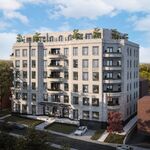LeonSKennedy
New Member
Update:
Finch Ave. being looked at regarding utilities that might cause conflicts.
Finch Ave. being looked at regarding utilities that might cause conflicts.
Seems this project is quite stalled. I would have thought we would be able to move on to the next round of public consultations or public open houses by now. This project is eerily quiet compared to the progress of SELRT and Eglinton.
On one hand, Finch is an excellent route for LRT, no doubt about it. It experiences very high volumes of passengers, loads that busses simply can't serve. There's plenty of room on the road for LRT ROW, and there's tonnes of room for ridership growth so the extra capacity of LRT can be used fully. there.
Yep, it turns down at the 400 on basically an express route to Pearson. From there, there's also a corridor that's going to be used by the Mississauga transitway, following the 403 to Oakville.The Spadina extension will really split Finch West's ridership and reduce crowds, though (but perhaps ridership growth will eat that or most of that right back up).
The hydro corridor doesn't even go as far as Weston, and a pretty massive bridge would be needed at Dufferin.
The Spadina extension will really split Finch West's ridership and reduce crowds, though (but perhaps ridership growth will eat that or most of that right back up).
The hydro corridor doesn't even go as far as Weston, and a pretty massive bridge would be needed at Dufferin.
I'd have to agree here that while Finch is well suited for LRT, the current design does not offer enough of a speed boost. The current Finch buses would suffice just fine the way they are to serve local demand.
The speed boost comes from the multi-door boarding, multi-unit (MU) trains, transit priority signals, and right-of-ways. You don't get that with narrow single-door boardings of single unit buses sharing the road with traffic.
If you can do it with LRT, you can do it with buses. The fiction being spread with Transit City is that buses can't be improved and must be replaced.
Multi-door boarding is extremely fast if few people are getting on or off and they can walk around the vehicle freely (like, for example, Ellesmere station on the RT in the off-peak), but does anyone really think they'll be running LRT vehicles at very high frequencies if they're not crowded? No, they'll run just enough to maintain an acceptable level of overcrowding. As vehicle frequency lowers and stop spacing increases, you get larger and larger crowds waiting for each vehicle and squeezing their way off, which eats up time.
Exactly why with light rail vehicles can handle the larger crowds with MULTI-UNIT trains of 2 or 3 cars. And since a low-floor light rail vehicle is about 2½ buses in length, a 2 car MU train will be the equivalent of 5 buses at one time. Try coupling 5 buses together with a single driver.




